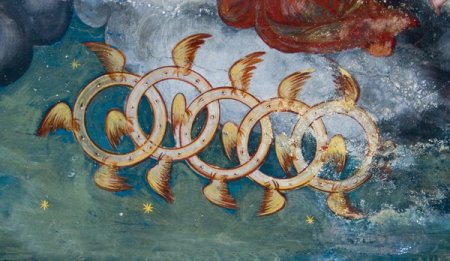|
The Art of Angels - Thrones |
|
|
The appellation
of the most exalted and pre-eminent Thrones denotes their manifest
exaltation above every grovelling inferiority, and their supermundane
tendency towards higher things; and their unswerving separation from all
remoteness; and their invariable and firmly-fixed settlement around the
veritable Highest, with the whole force of their powers; and their
receptivity of the supremely Divine approach, in the absence of all
passion and earthly tendency, and their bearing God; and the ardent
expansion of themselves for the Divine receptions.
They are associated with the
extraordinary vision of Daniel:
The idea of Thrones as wheels is not generally accepted in Christian theology. Rather they are seen as symbols of authority and justice, and their name does give weight to that. Here are two images showingThrones in a more familiar angelic form. On the left below are the Thrones from the Baptistery in Florence. The other is by Guariento D'Arpo, c 1345, froan sequence of angelic images. The Florentine Thrones carry mandorlas, which have a suggestion of wheels. Guariento's Throne sits on a throne rather than carrying one, and this certainly suggests authority and justice.
|
|
 |
 |
| Angelic Hierarchy Introduction Angels page 1 | |
|
|
|
